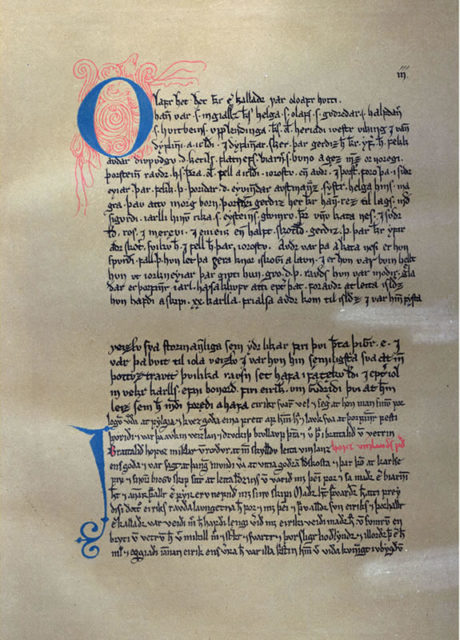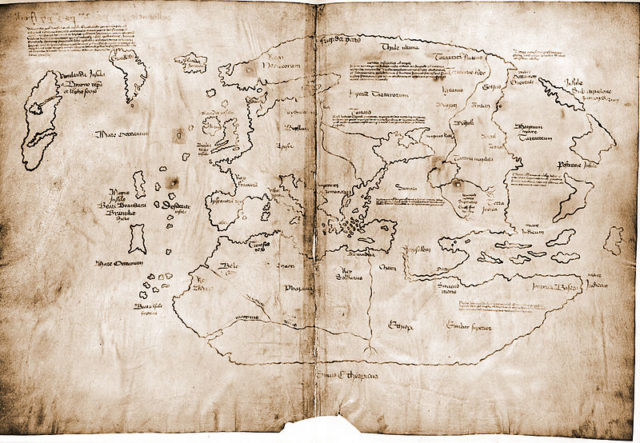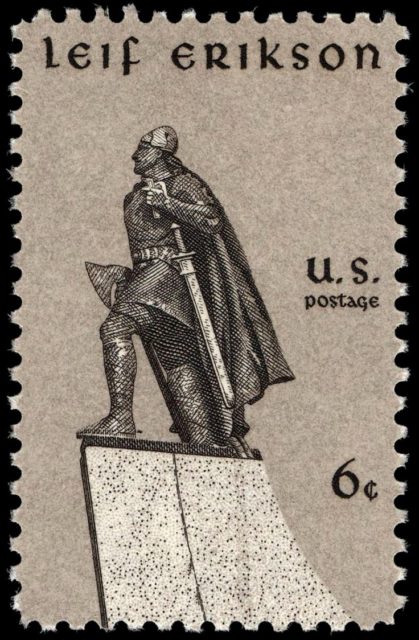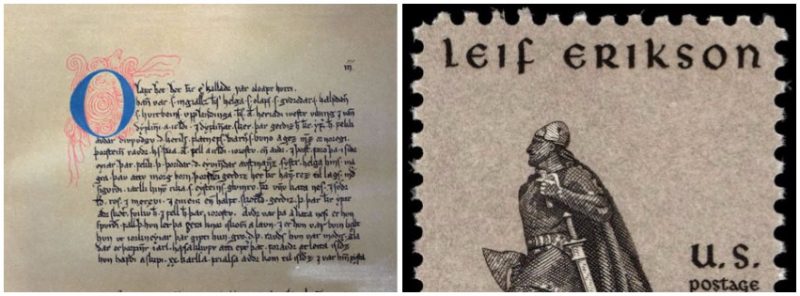The Vinland Sagas, Grœnlendinga Saga and Eiríks Saga Rauða, or Saga of the Greenlanders and Saga of Eric the Red respectively, are two famous and well-studied texts that are still causing controversy today.
The debate centers around the question of whether they are a fictional or non-fictional account of the people of Iceland and Greenland exploring and discovering the country of Vinland. Vinland is thought to be an area of North America explored by Norse Vikings, in particular, Leif Erikson, five centuries before Christopher Columbus. In 1960, archaeological evidence was found of a Norse settlement on the island of Newfoundland; before this, the only evidence was in Old Norse sagas such as the two mentioned above.


The two sagas are now considered to be two different accounts of the same event. The historians and academics who study them have stated that when reading them, you need to take into account the times in which they were written and the purpose behind them.
The purpose of Grœnlendinga Saga seems to be to give an account of the expedition and the discovery of Vinland, what they found there, and what the journey was like. Experts feel that Eiríks Saga Rauða, which was written later, was more to honor an ancestor than to write an accurate document about the discovery of Vinland. however, both texts provide details of the life of Guðríðr Þorbjarnardóttir, a prominent figure at the time Vinland was discovered. In both texts there appears the same account of her having her fortune read in Greenland and being told of how wonderful her descendants would be. In the twelfth century, one of her descendants ended up being canonized, and others became bishops.

The sagas do tell about the behavior of the Skrælings (the people they discovered in Greenland and North America), and the observations match other written accounts from sixteenth-century explorers.
Historians believe that both writers of the sagas rearranged their source material to match it to the purpose they had in mind when writing it. It is thought the author of Eiríks Saga Rauða used a wider range of source material to create his story.

It is possible that both stories are actually a result of the rich oral traditions of storytelling in the Norse culture, About Education reported.
We have another story for you:The era of the Norse Vikings and where it all began
They are rare and detailed accounts of events so far in the past it is likely no one will ever be able to decode what their true purpose was. However, they are valuable documents in their own right, regardless of whether they are pure fiction or a factual documentation of events unfolding at the time. Translated copies of both of them are available as books and are online in various places.
